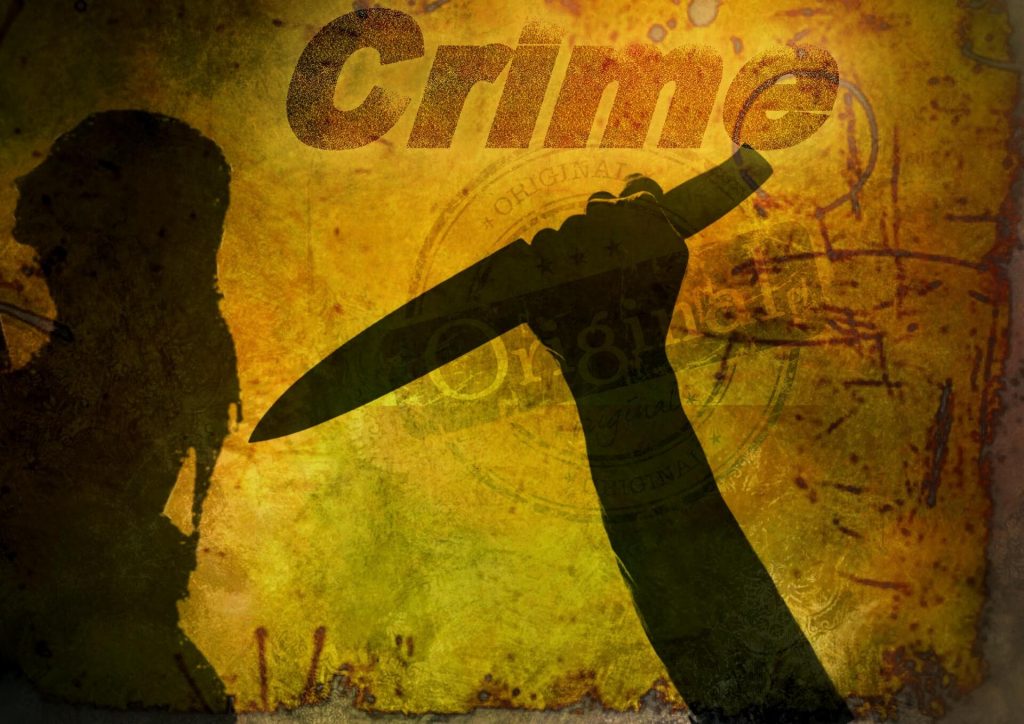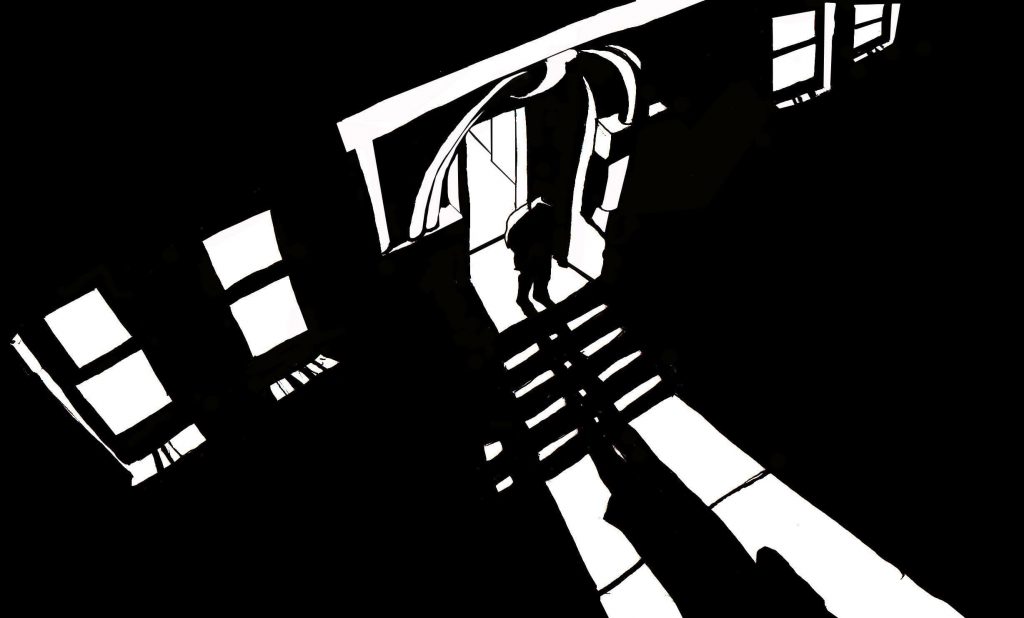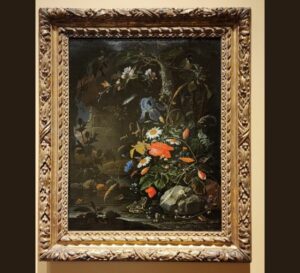Unlike the better-known detectives of Bengali literature, Priyanath Mukhopadhyay (1855-1947) was a real-life police officer who published First Person accounts of his exploits. He has more than enough murderers, dacoits, burglars, kidnappers, counterfeiters and conmen, together with severed heads and limbs, to give Byomkesh, Kiriti, Feluda and Mitin Mashi a run for their money.
Priyanath retired from Calcutta Police after 33 years of service on 15 May 1911. The text he is best remembered for, Darogar Daptar or “The Policeman’s Diary”, was serialized in monthly installments from 1892 to 1910. As opposed to other real-life author-detectives writing about crime in Bengal, such as Major H. M. Ramsay, R. Reid, Girish Chandra Basu and Panchanan Ghoshal, Priyanath is greatly invested in the entertainment quotient of his accounts.

The attractions of Priyanath’s narratives are primarily twofold. First, they supply the voyeuristic thrill of following the real-life detective-narrator as he exposes the seedy underbelly of society and seamier facets of the human mind, especially in the colonial metropolis of turn-of-the-century Calcutta with its jostling multi-ethnic and multi-cultural population. Second, Priyanath’s stories inspire confidence in the resilience and resourcefulness of the detective-narrator who embodies the law and almost invariably brings the criminals to justice.
Priyanath’s protagonist comes across as a jovial but diligent professional, easier to identify with than the formidable law-keepers of the real world. But Priyanath is not entirely transparent about the veracity of the cases narrated by him. In the preface to the third year of Darogar Daptar, he declares that those accounts narrated by himself as a character in the First Person may be safely taken as pertaining to real-life cases, while the rest may be seen as imaginary or even adaptations of English fiction.
Nevertheless, Priyanath did not strictly maintain this distinction. For example, his Adbhut Bhikari or “The Strange Beggar” (Chaitra 1311 BS installment of Darogar Daptar) is based on the Sherlock Holmes story “The Man with the Twisted Lip,” whereas Chhabi or “The Picture” (Agrahayan 1313) borrows freely from “A Scandal in Bohemia.” Besides, Stree Ki Purush? or “Woman or Man?” (Shravan 1302) has two storylines spliced uneasily together, one of which is silently appropriated from “The Adventure of the Engineer’s Thumb”.
Priyanath is not entirely transparent about the veracity of the cases narrated by him. In the preface to the third year of Darogar Daptar, he declares that those accounts narrated by himself as a character in the First Person may be safely taken as pertaining to real-life cases, while the rest may be seen as imaginary or even adaptations of English fiction.
Further, Sukumar Sen suggests in his history of Bengali literature that Priyanath churned out his stories through a syndicate of ghost writers. One of them is identified as Kshetramohan Ghosh, who also published adaptations of English crime fiction under his own name. Priyanath’s detective protagonist may not be therefore much different from the tricksters he unveils. Academic discussions of Priyanath have not taken adequate notice of the crime writer’s duplicity.
Priyanath, however, emphasizes the truth quotient of his accounts where possible and relevant. For example, the story Ingrej Dakat or “The English Dacoits” serialized over Poush and Magh December-January) 1301 relates Priyanath’s exploits in pursuing and arresting two convicts named Healey and Warner who escaped from the Presidency Jail in March 1889, and his claims are substantiated by excepts from The Englishman and Samachar Chandrika that identify him as a Sub-Inspector of the Calcutta Detective Police.
Besides, Priyanath wrote two accounts, the first published in Ashwin 1305 and the second in Jyaistha 1312, of his encounter with Trailokyatarini, a prostitute-turned-serial-killer sentenced to death by hanging on 3 September, 1884. Trailokya had killed five prostitutes by drowning them in a pond in Manicktala and looted their jewellery, but the crimes remained unsolved until she was arrested by Priyanath in 1884 for killing another prostitute in a tenement house of Chitpur, Calcutta. For both the accounts, Priyanath adduces proceedings of the trial at the Calcutta High Court as published in The Statesman and Friend of India.

Priyanath’s stories register the colonial rule and resultant cultural formations, without playing up or calling attention to the discontents of the colonized. More remarkably, Priyanath is not overwhelmed by racial stereotypes. He feels free to criticize the inefficiency of European superiors when it is evident, as in the case involving Healey and Warner. Moreover, when discussing the malpractices in the auction house, he remarks on its cosmopolitan nature, “It has Europeans, Jews, Muslims, Bengalis…it is difficult to believe that they are all conmen.”
At the beginning of the story “Miss Mary” he declares, “There is no community that does not live within the city of Kolkata. Although located in Bengal, the city is inhabited by all communities including Hindus, Muslims, Christians, Buddhists, Jains and so on, and there are incidents within all of these communities that require our investigation.” With this preface, he proceeds to narrate a case of murder in a European Christian family.
In the story Jamalayer Pherta Manush or “The Revenant”, Priyanath goes disguised as a Muslim to a coffee joint in the infamous locality of Mechuabazar, Calcutta and relates, “This joint is established for the amusement of all the Muslims who have been driven away from their homeland, be it Arabia, Persia, Africa, the Punjab or Calcutta, because of the most monstrous offences.” However, he does not take for granted any community to be inherently criminal, as R. Reid often does.
On the whole, Priyanath’s detective-narrator retains the condescending perspective of law, but the literary-detective project itself betrays the visceral appeal of crime.
In the same story, Priyanath describes a khoncha or opium den of Mechuabazar and finds it to be a great equalizer: “Inside it there are women, Hindus, Muslims, old men and young, and boys. There is no distinction between men and women, no difference between Hindus and Muslims.”
Priyanath seems to understand criminality to be a fact of life and takes it as just another expression of human nature, which endorses his function as a detective. On the whole, Priyanath’s detective-narrator retains the condescending perspective of law, but the literary-detective project itself betrays the visceral appeal of crime.
The reprints of Darogar Daptar in the new millennium have found an enthusiastic audience, but they also merit to be known beyond the Bengali-speaking community. Deft, insightful translations are hence called for and still awaited. Apart from its historical value, Darogar Daptar holds out a lot of promise in this day and age of thriving period dramas and crime-based web series.



























5 Responses
Excellent, revealing !!!
Great read Abhishek! Fantastic!
Interesting and insightful review; whets the reader’s appetite for more on “Darogar Daptar”
Abhshek babu, is it possible to get to read the original Darogar Daptar, especially Priyanath’s conversations with Trailokiya.
Yes it is. Darogar Daptar has been reprinted and is available for sale in bookshops and online portals.